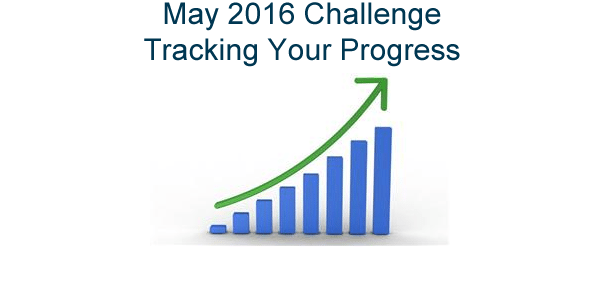
In order to accomplish your goals you need to track your progress. There are multiple ways to track your fitness progress. Today I want to talk about those tracking methods and discuss why some are good while others are bad.
Are You on the Right Path?
People jump onto a fitness program with a lot of excitement. They are ready for change and want to accomplish that change with every fiber of their being. They set goals and go to work trying to accomplish them. How will they know they are on the right path if they don't track their own progress?
Scale Weight as a Measurement
The most obvious measurement when trying to lose weight is scale weight. It definitely gives interesting feedback, but the feedback it provides is only interesting to me when combined with other measurements.
Scale weight is affected by so many different variables that have nothing to do with weight loss success or failure. If you are carb cycling and you weigh yourself after a high carb day you will find your scale weight has risen. For women on their time of the month they will also see their scale weight has risen.
To me scale weight alone is the least trustworthy measurement and I will explain in the body fat portion of this discussion below.
Body Fat Percentage as a Measurement
Our bodies are made up of lean body mass (muscles, bones, tissue and water) and fat. I tend to focus the most on my body fat measurement. Why?
To me, body recomposition is a better goal than weight loss. You can lose 100 pounds and still not be healthy. Dropping body fat will make you healthier and that is why I focus on it more than the scale weight.
I do believe that using scale weight in conjunction with fat percentage is a great way to go. You measure your body fat with calipers (for easy to use calipers see the Accumeasure calipers on Amazon), hydrostatically or using bioimpedance. The method you use isn't important. What is important is to measure it the same way every time and to track the direction of your numbers–up or down.
As an example of why I think you need to track your body fat, imagine Joe is 28 years old, weighs 200 lbs and has 30% body fat. Joe begins to change his lifestyle. He has started with 140 lbs of lean body mass and 60 lbs of fat. Over a period of 6 months Joe steps on the scale and he now weighs 200 lbs. Should Joe be upset? Joe next measures his body fat and finds that he is at 10%. Joe hasn't lost any scale weight but had dropped 20% body fat. He now has 180 lbs of lean body mass and 20 lbs of fat. Joe has managed to eliminate 40 lbs of fat! Joe is much healthier even though the scale weight is exactly the same.
Circumference Measurements
Another way to track progress is that take circumference measurements of things like your arms, legs and midsection. These numbers give great feedback about how you are doing.
Track Everything Plan
The plan I want you to follow is the Track Everything plan. Every week at the same time on the same day weigh yourself, take your body fat measurement and take your circumference measurements. Track them in something like a spreadsheet so you can observe the trend.
Make Adjustments
As you're tracking your results you will use them to make adjustments to your plan. You will be able to react more quickly. You will be able to adjust so as to keep your progress going in the right direction.
Want to see all the messages in this May 2016 Challenge Series? I have them organized for you right here.
